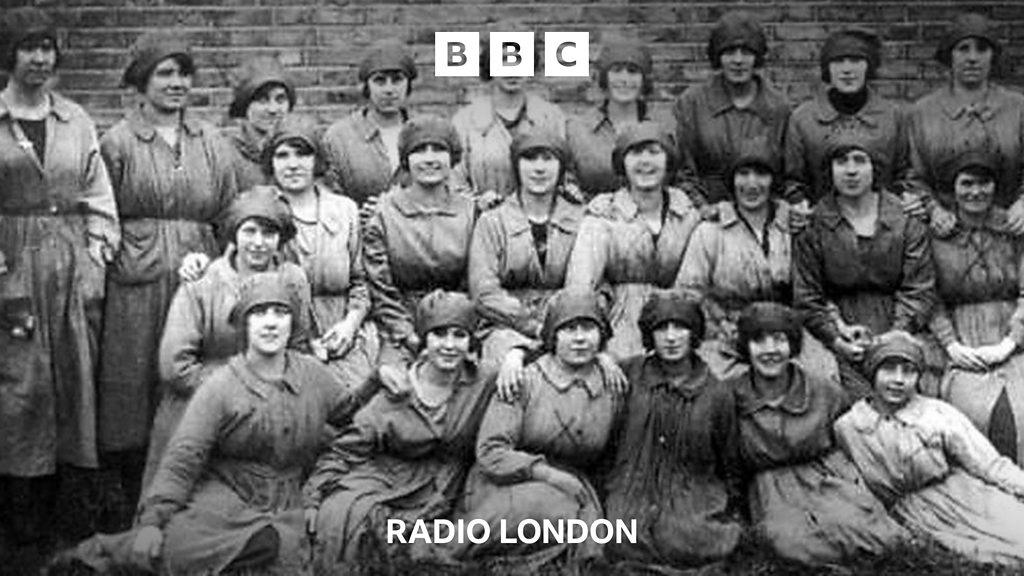Slade Green munitions disaster: Search for relatives of victims
- Published
Mike Smith spoke to BBC Radio London's Robert Elms about plans for the memorial service
A man is searching for the relatives of 13 people who died in an explosion at a munitions factory ahead of a service in south-east London 100 years on.
In February 1924, 12 young women and one man were killed when fire ripped through their hut as they dismantled devices on marshes near Slade Green.
Services have been held before but Mike Smith, whose aunt Amelia was among the dead, said they were stopped and the names of relatives had since been lost.
It will take place on 18 February.
British Pathé footage shot in the aftermath of the disaster shows the destruction caused by the explosion
On the morning of 18 February 1924, 20 girls and women and a man had been working in part of the Slade Green Filling Factory, which was run by owner WV Gilbert Ltd on behalf of the government.
The group had been breaking down Verey lights - cartridge flares used for signalling and lighting at night - when witnesses reported seeing a bright flash of light and an explosion.
Flames then spread rapidly through the shed igniting more of the devices, with those appearing as "stars" within the blaze.
While some people managed to escape, 11 of the female workers, who lived locally and were aged between 16 and 24, were trapped, with several suffering such severe injuries their bodies could not be recognised.
An inquest heard they may have been blinded by the exploding cartridges and could not make their way out of the hut. One of those killed also had only started at the works that morning.
The factory foreman, Edward Jones, 29, from Forest Hill, also died as he tried to lift a girl from the window to help her escape, but was overcome by the heat and smoke and fell back into the building, according to a witness.
One of the teenage workers, 17-year-old Edna Allen, made it out of the building and was taken to hospital, but having been badly burnt died from her injuries that night.
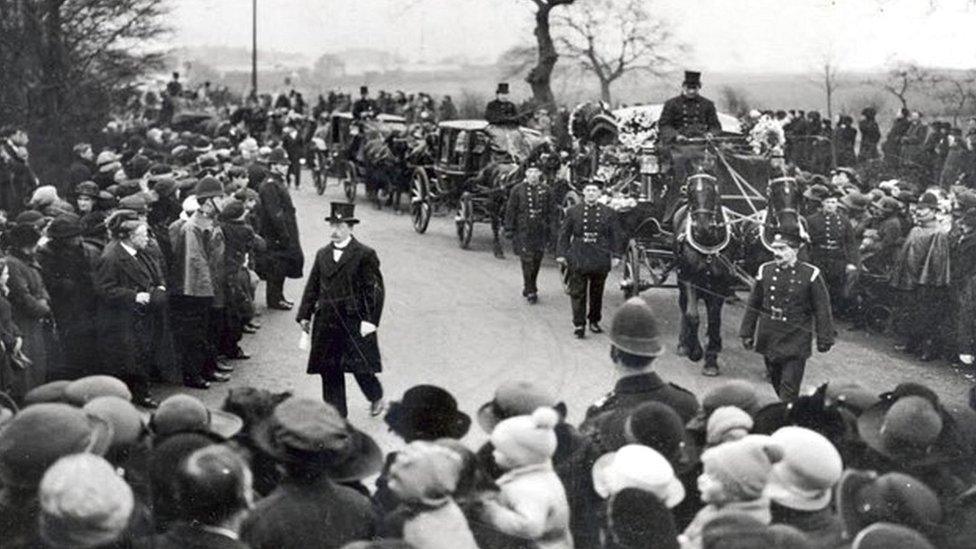
Thousands lined the streets for the funeral of several of the victims
A joint funeral attracted tens of thousands of people with seven of the victims, including Mr Smith's aunt, being buried in a single plot beneath a large stone memorial in Erith Cemetery.
Mr Smith told the BBC it made him "feel a bit sick" to think about what happened to his relation. He was first told about her by his father, who at the age of 11 had been "taken out of school and told that his sister had died".
From 1996, annual memorial services were held to remember the victims, but these were stopped during the pandemic and the details of those who attended have been lost since then.
Mr Smith said he therefore wanted to get in touch with people connected to the disaster, including families of survivors and those who died, so they could pay tribute at next year's service.
"I think the girls should be recognised for the sacrifice they made," he explained.
"If they had died in the trenches it would have been a big deal. Because they died dismantling explosives, it doesn't seem to be so heroic but I don't see it like that."
Speaking about a photograph of the female workers taken shortly before the disaster, Mr Smith added he could "only put names to nine of them", and he was keen to identify the others.
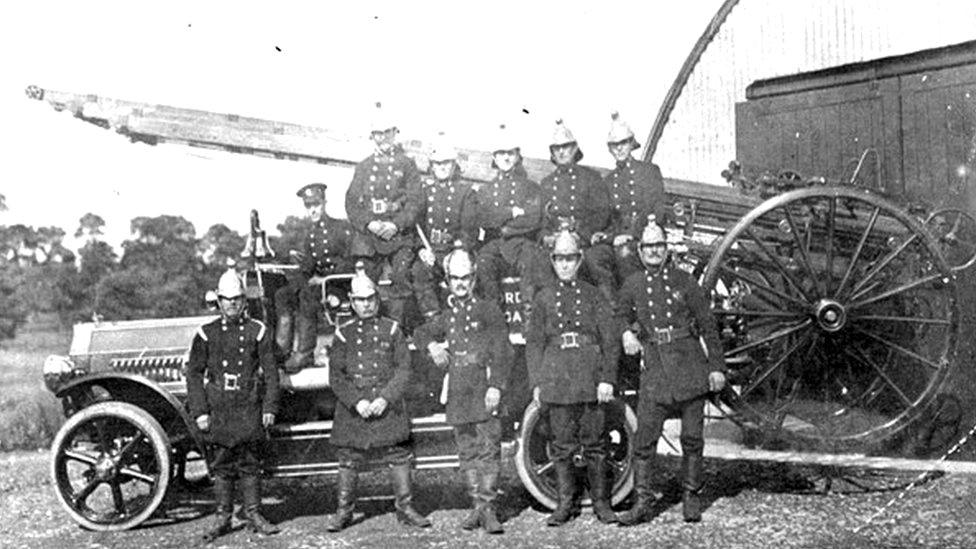
A crew from Crayford Fire Brigade battled the flames
According to local parish records, the position of the factory on the desolate marshes meant it took firefighters nearly half an hour to arrive at the scene following the first call about "a slight explosion and fire... in Shed No. 5".
It would then be another 25 minutes before an ambulance turned up.
The records stated that, once there, the crews worked without "the slightest regard for their own safety" by battling the flames and climbing on to other nearby munitions buildings to remove burning Verey lights that had landed on them.
Mr Smith said he felt it was only right they should be "recognised as well for the work that they've done".

The Slade Green disaster victims
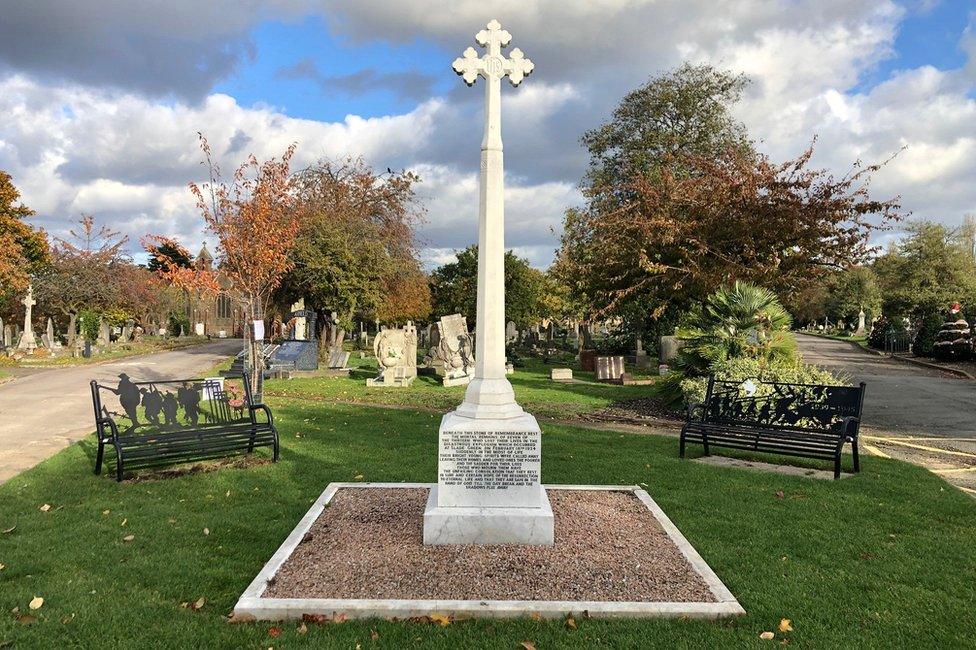
Memorial services have previously taken place in Erith Cemetery where there is a memorial stone for those who died
Alice Sweeny, 16, of St Francis Road, Erith
Edna Allen, 17, of Alexandra Road, Erith
Alice Harvey, 17, of Arthur Street, Erith
Alice Craddock, 18, of Arthur Street, Erith
Ethel Pullen, 18, of Bexley Road, Erith
Stella Huntley, 19, of Oxford Terrace, Erith
Amelia Smith (also known as Polly), 19, of Powell Street, Erith
Dorothy Sturtivent, 22 of Manor Road, Erith
Irene Turtle, 22, of West Street, Erith
Edith Lamb, 23, of Upper Road, Belvedere
Gladys Herbert, 23, of Friday Road, Erith (it had been her first day in the job)
Elizabeth Dalton, 24, of Lewis Road, Bexleyheath
Edward Jones, 29, of Dalmain Road, Forest Hill
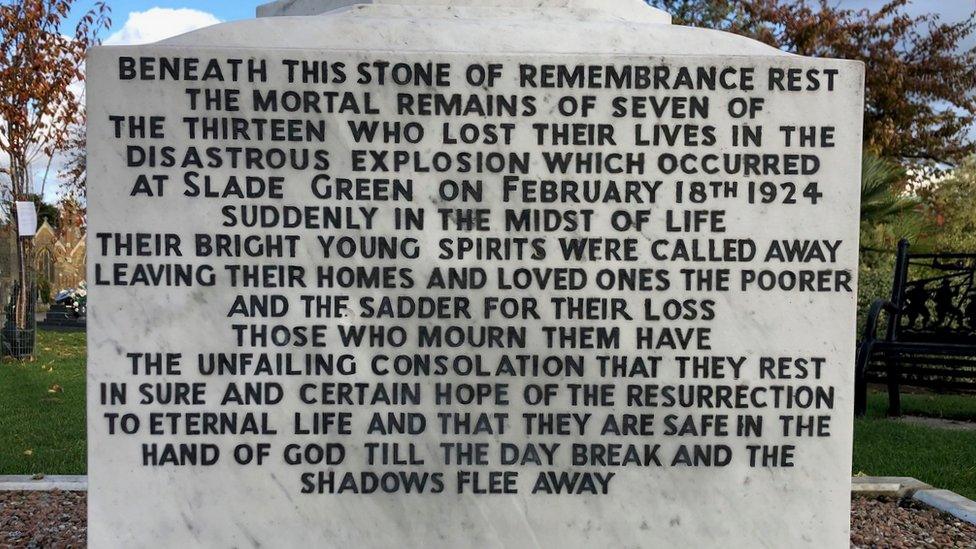
Seven of the victims are buried beneath the memorial

No definite cause for the initial explosion was ever established but the disaster was debated in Parliament.
Following an inquest, it was recommended that "all work of an explosive nature carried out by private firms should be under the Explosives Act", in order to provide more protection for workers.
The memorial service is due to be held at St Augustine's Church in Slade Green next February.
You can hear more about the Slade Green munitions disaster on the Robert Elms show on BBC Radio London between 10:00 and 14:00 GMT on Friday, or listen back on Sounds.

Listen to the best of BBC Radio London on Sounds and follow BBC London on Facebook, external, X, external and Instagram, external. Send your story ideas to hello.bbclondon@bbc.co.uk, external
- Published17 November 2023
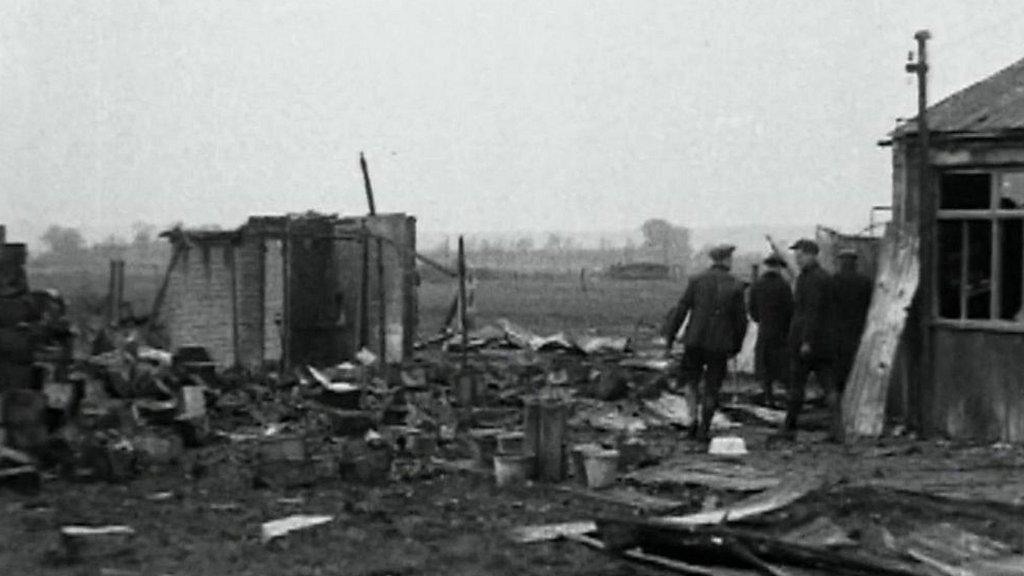
- Published17 November 2023
